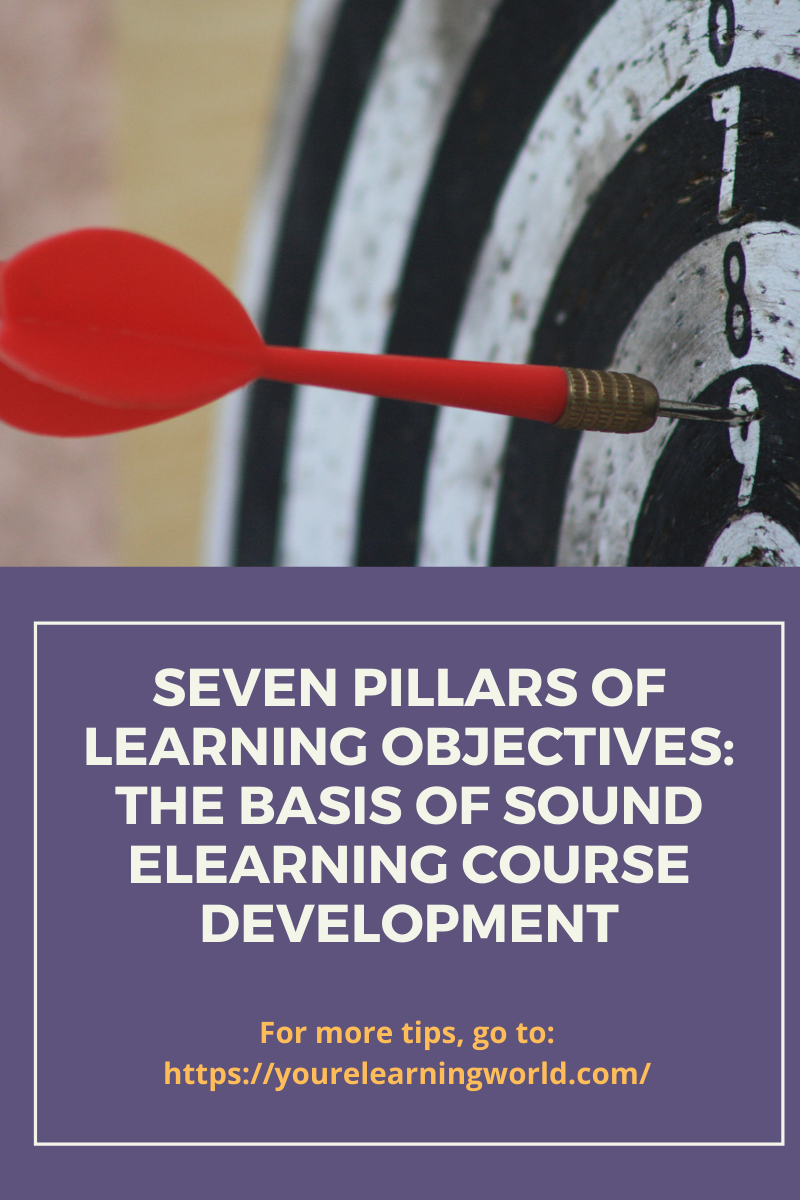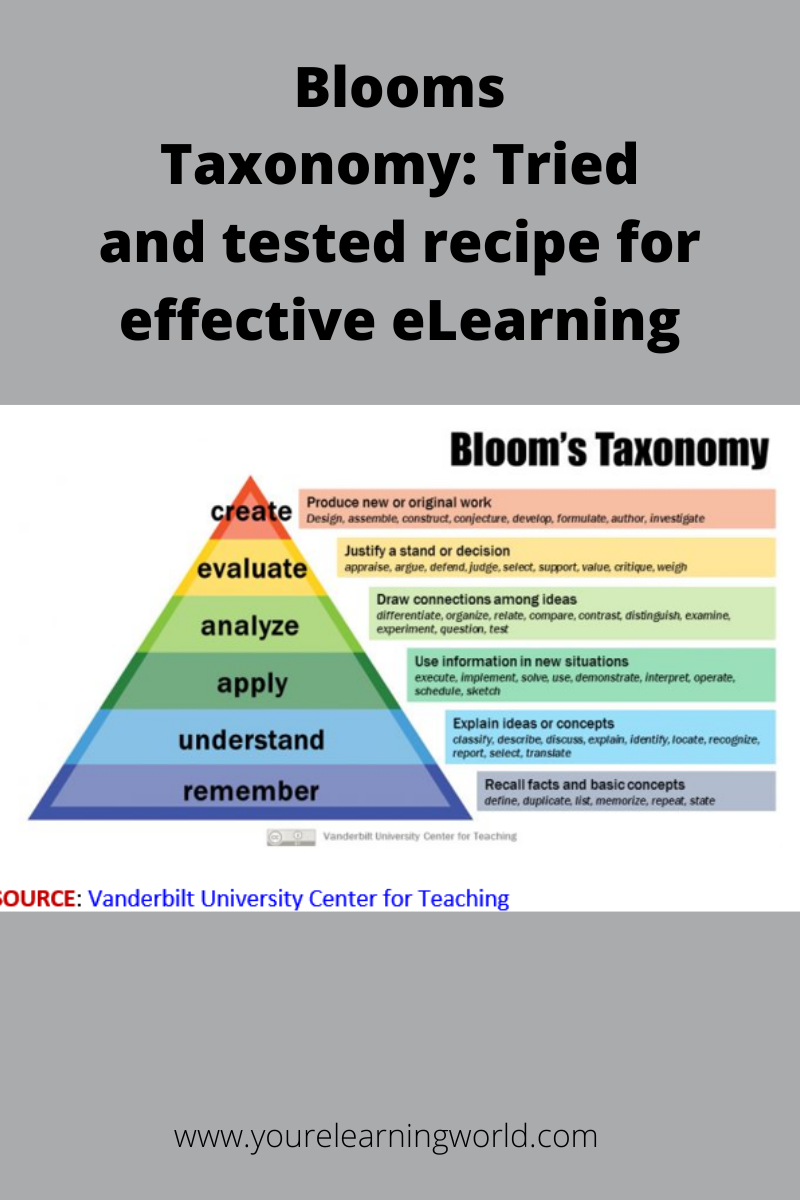Learning objectives are the cornerstones around which Learning and Development (L&D) professionals assess whether learners demonstrate successful learning from completion of a unit of an eLearning course. Because of their critical nature, L&D teams must understand how to write them correctly. Improperly developed learning objectives not only fail to measure successful learning, but they often also serve to defeat overall learning outcomes. Discerning Outcomes and Objectives Newcomers to eLearning course development often use “outcomes” and “objectives” interchangeably. While to the layperson they might seem similar, to an L&D professional, they aren’t! LEARNING OUTCOMES: These describe high-level (often longer-term) behavioral traits involving a broad spectrum of skills, knowledge, and attitudes that a course desires to impart. Outcomes are strategic outcomes that a course seeks to accomplish. Example: “Upon completing this course the learner will consistently … [Read more...] about Seven Pillars of Learning Objectives: The basis of sound eLearning course development
learning objectives
Blooms Taxonomy: Tried and tested recipe for effective eLearning
Bloom’s Taxonomy was created in 1956, by educational psychologist Dr. Benjamin Bloom, and subsequently updated in 2001 to its current form. It is based on hierarchical ordering of learner’s cognitive skills, which then facilitates learning professionals (L&D) and Instructional Designers (ID) in helping learners learn better. To help instructors and course developers understand how to achieve their learning objectives, the taxonomy breaks down human thinking skills into six categories, ascending as a pyramid from lower to higher-orders of thinking. Using Bloom's Taxonomy Understanding Bloom’s Taxonomy can play a vital role in helping eLearning professionals create highly effective learning objectives; organize learning into logical structures to help make learning a seamless process; inject focused interactivity into courses; and design course assessments that truly evaluate whether learners have mastered desired learning objectives. Here are some strategies and tips to help … [Read more...] about Blooms Taxonomy: Tried and tested recipe for effective eLearning
How to Write Effective Learning Objectives
All instructional designers are well aware of the benefits of learning objectives. However, even those who mastered the art of writing objectives often wonder of their effectiveness. First, let’s look at some of the reasons why we need to include learning objectives in our lessons. Most importantly, objectives tell learners what they should expect from the course. They also help learners understand what is important in the course and what they will most likely be assessed on at the end. While the advantages of learning objectives are evident, many learners find them useless and often skip over them. So, what can an instructional designer do to help learners pay attention to the objectives? There are several ways to handle this problem. First, instead of offering a bulleted list of learning objectives at the beginning of the course, instructional designers should try to find some creative ways to engage learners. One way to do that is to come up with a realistic attention … [Read more...] about How to Write Effective Learning Objectives
3 Parts Of A Multiple-Choice Question – Constructing Effective Assessment Items
Today, I want to talk about writing effective assessment items. Not only that assessments draw attention to the most important elements of the course, but they also measure the extent to which learners have mastered learning objectives, help learners identify their strengths and weaknesses and keep track of learners’ progress. In order to be truly effective, assessment items must cover course objectives, be valid and reliable, and have correctly written stems, distractors, and feedback. Application questions are typically better than recall items as they promote higher-order learning. In this post, I will talk about the most popular type of assessments, a multiple-choice question. Multiple-choice questions require learners to choose the best response from several options. They are typically composed of three parts: question stems, correct answer or answers, and distractors. Question stems can include either complete direct questions such as, What is a Multiple choice … [Read more...] about 3 Parts Of A Multiple-Choice Question – Constructing Effective Assessment Items




